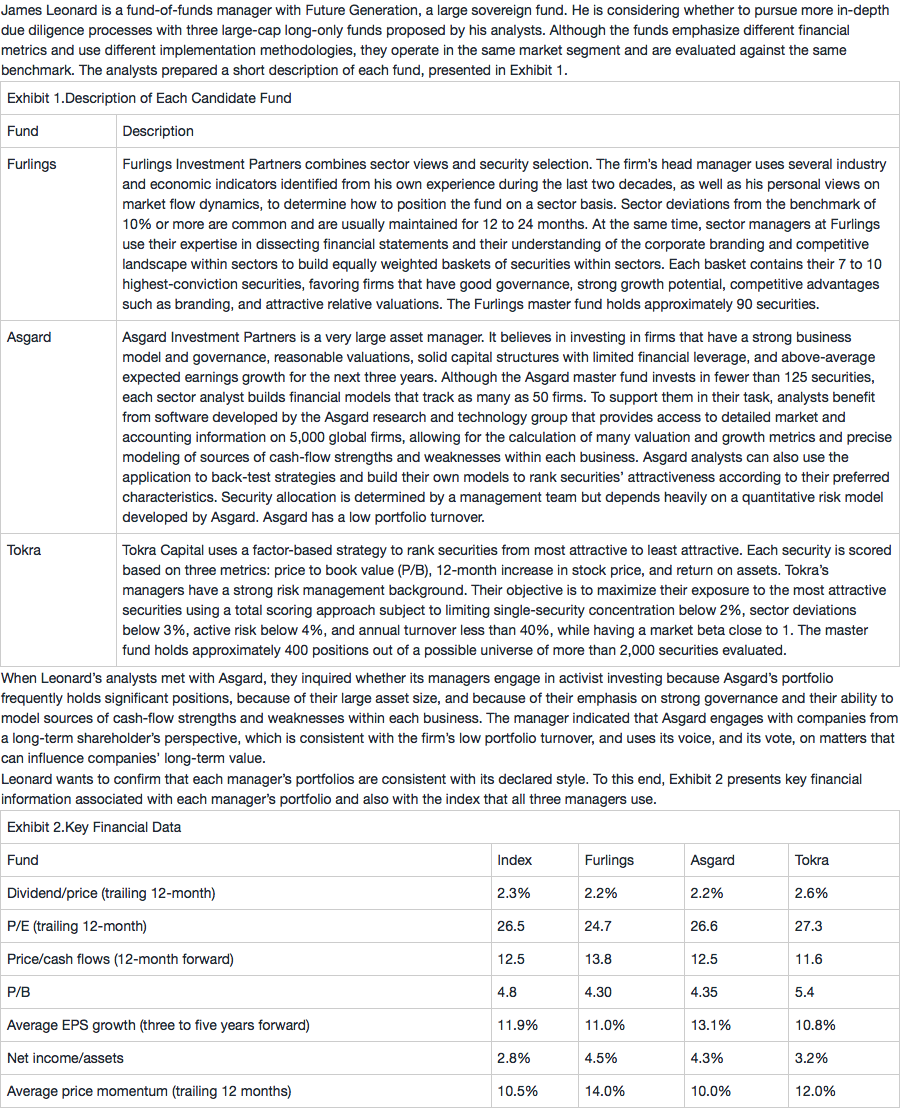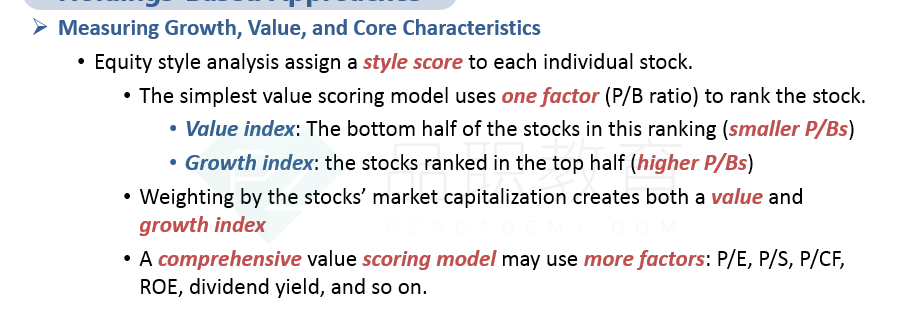NO.PZ201809170400000406
问题如下:
Leonard is looking at the style classification from Asgard as reported by Morningstar and Thomson Reuters Lipper. He is surprised to find that Asgard is classified as a blend fund by Morningstar and a value fund by Lipper. Which of the following statements is correct?
选项:
A. Although the Morningstar
methodology classifies securities as either value, growth, or core, the Lipper
methodology assumes a stock can have the characteristics of many styles. This approach
can result in a different classification for the same portfolio.
B. The Lipper methodology can only
lead to a value or growth classification. It does not offer a core/blend
component.
C. The Morningstar
methodology classifies securities as either value, growth, or core by looking at
the difference between their respective growth and value scores. It is possible
that the Asgard funds hold a balanced exposure to both value and growth and/or
core stocks.
解释:
C is a correct answer. Morningstar calculates a score for value and growth on a scale of 0 to 100 using five proxy measures for each. The value score is subtracted from the growth score. A strongly positive net score leads to a growth classification, and a strongly negative score leads to a value classification. A score relatively close to zero indicates a core classification. To achieve a blend classification, the portfolio must have a balanced exposure to stocks classified as value and growth, a dominant exposure to stocks classified as core, or a combination of both.
A is an incorrect answer. Both Morningstar and Lipper classify individual stocks in a specific style category. Neither assumes a security can belong to several styles in specific proportion.
B is an incorrect answer. The Lipper methodology does have a core classification. It sums the Z-score of six portfolio characteristics over several years to determine an overall Z-score that determines either a value, core, or growth classification.
请问这道题考的是哪个知识点,对应讲义是哪几页?




